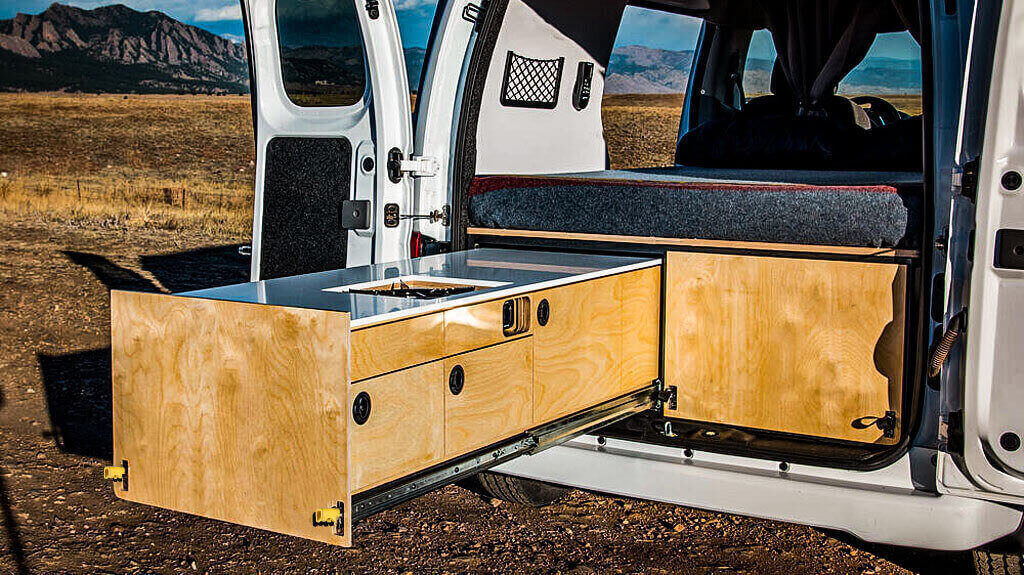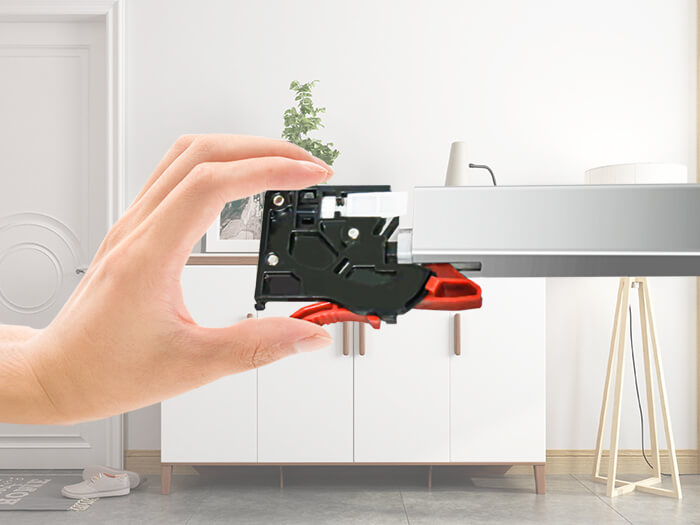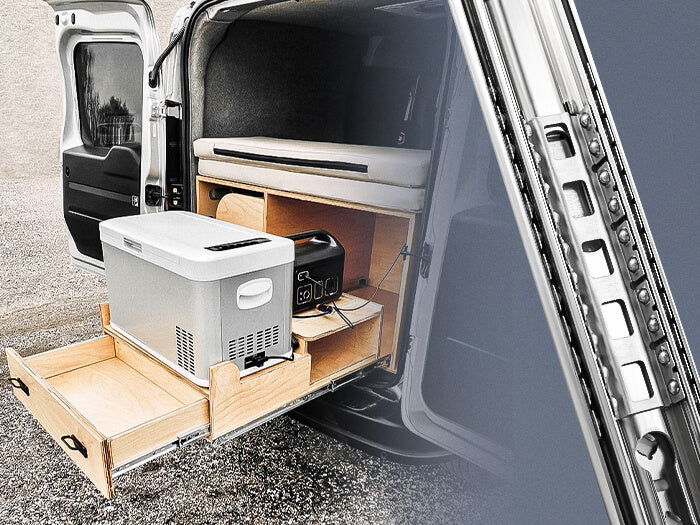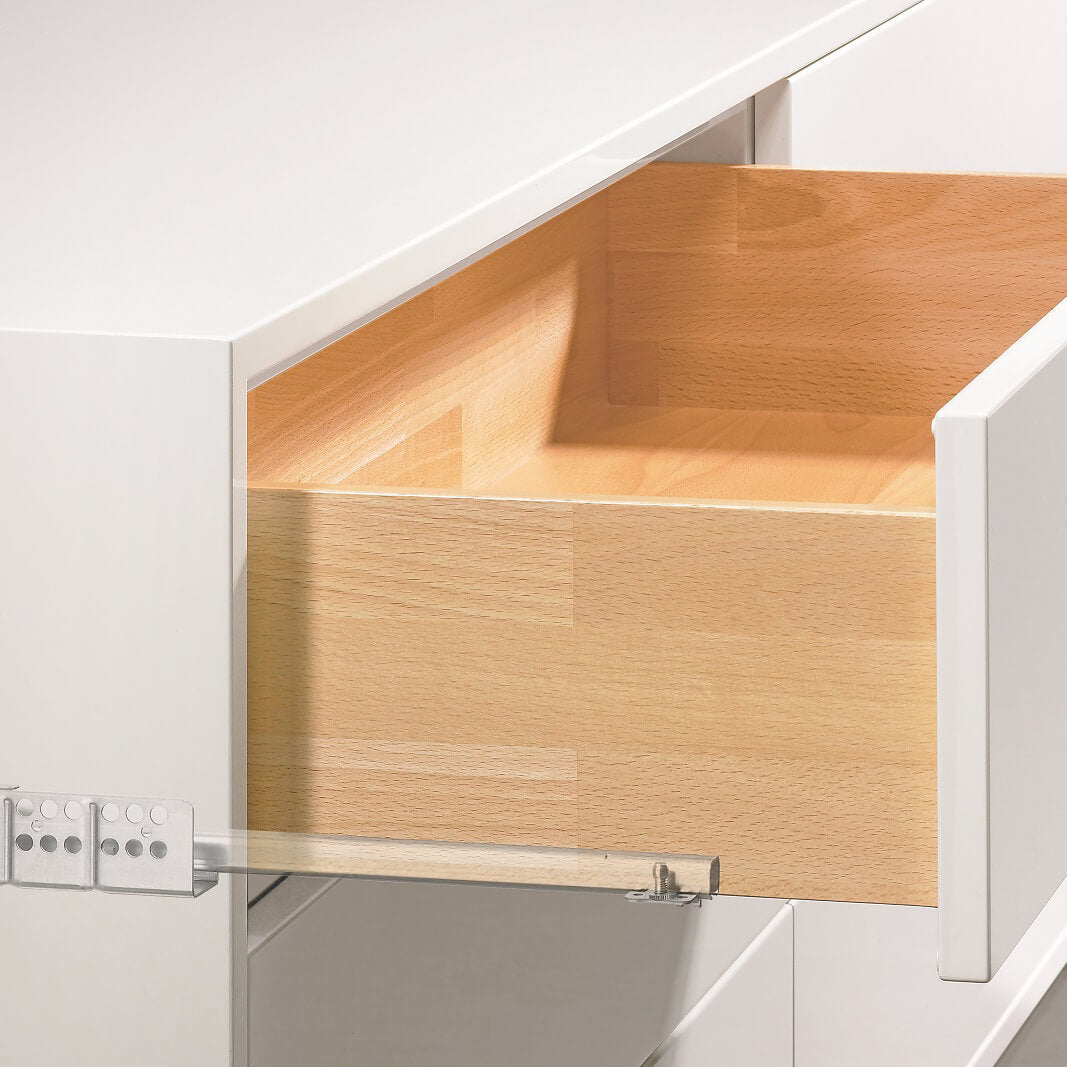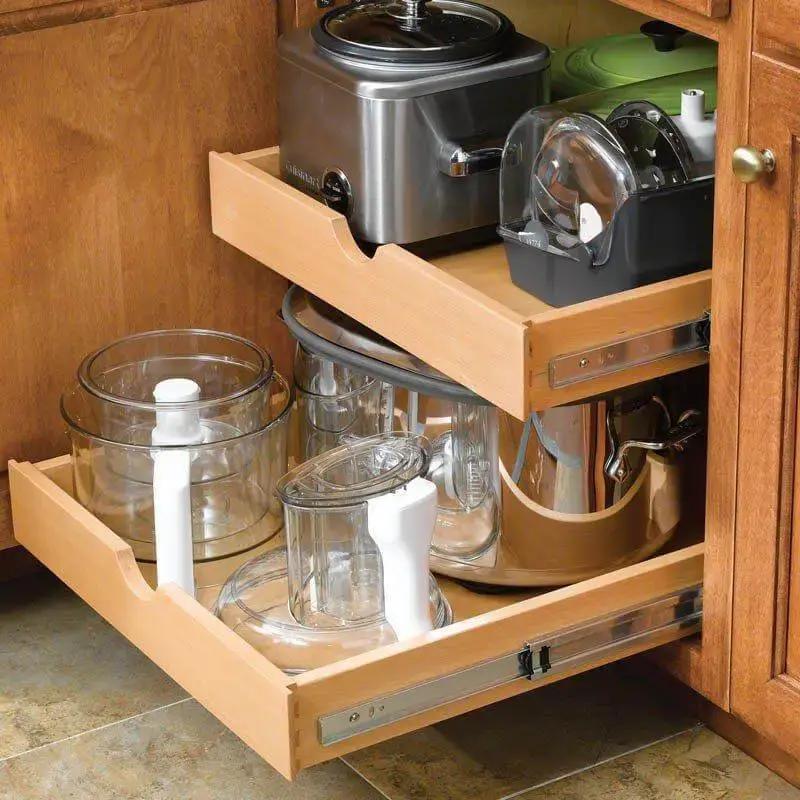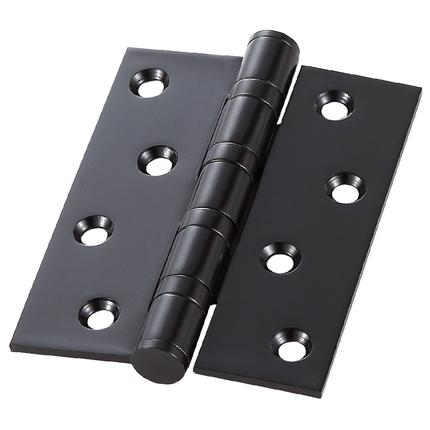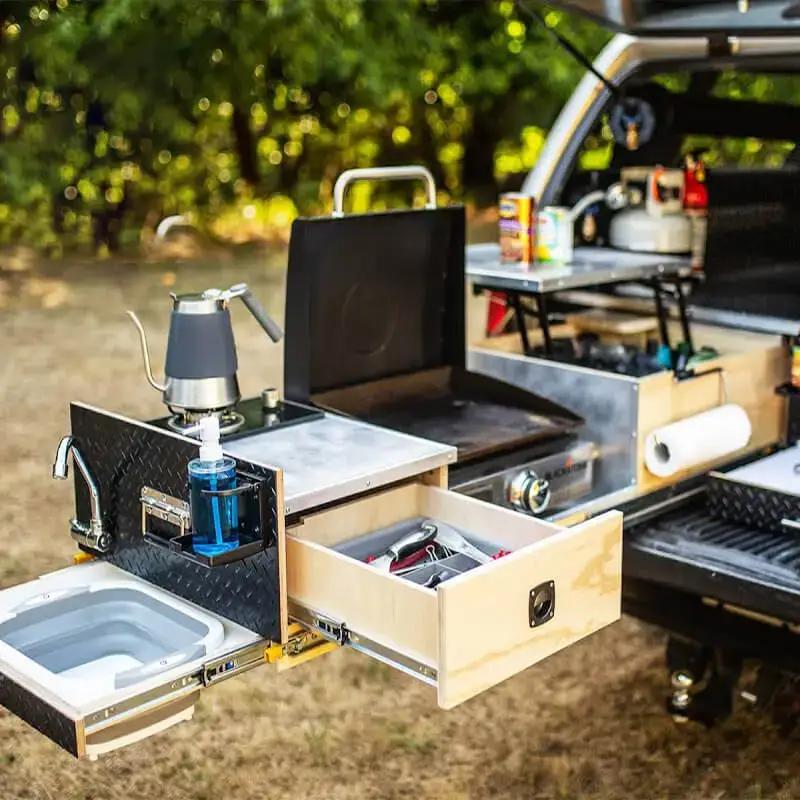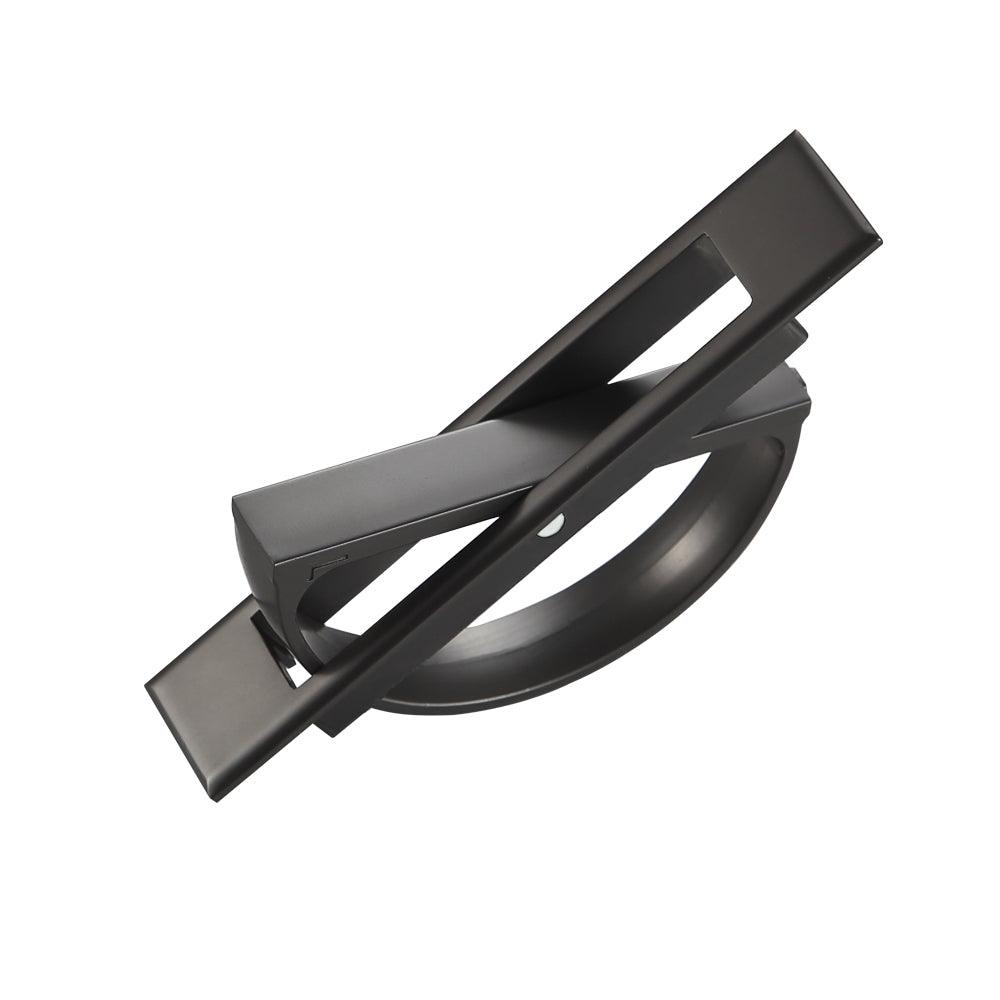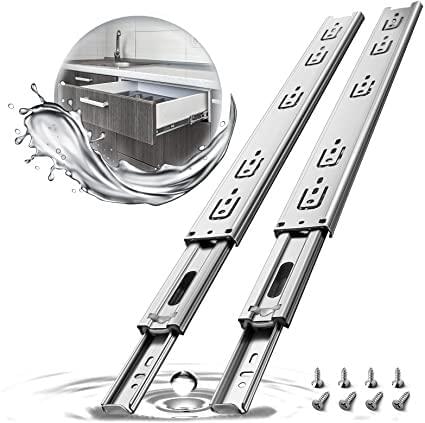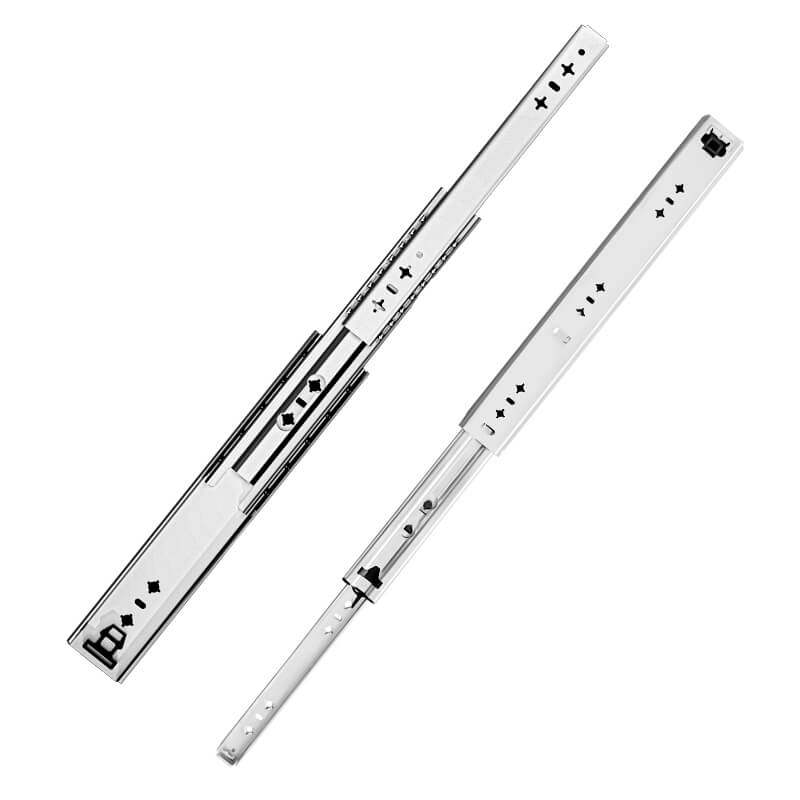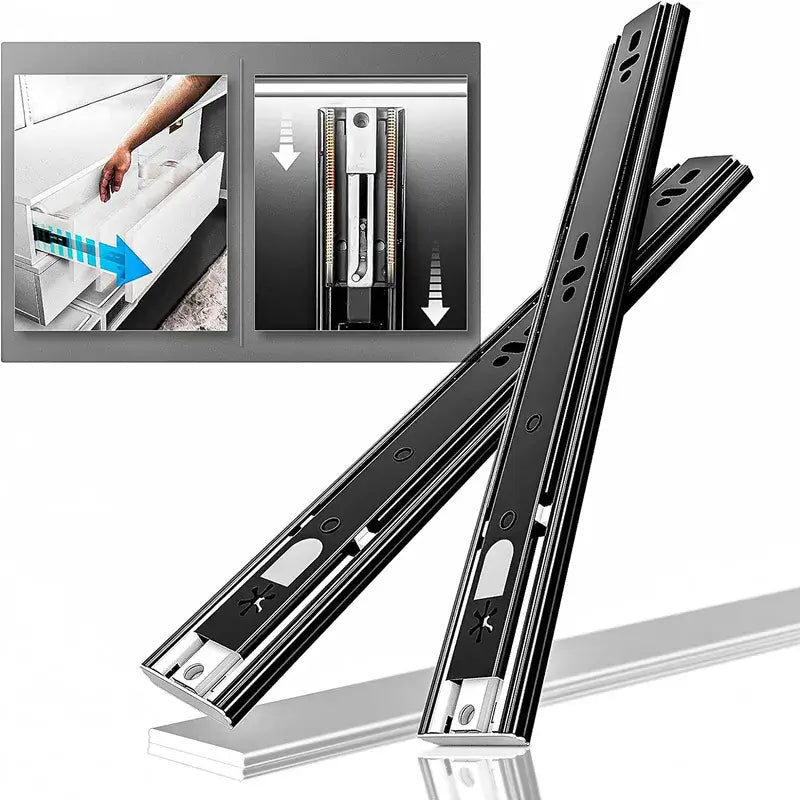Undermount drawer slides have gained popularity for their sleek and modern appearance, as well as their smooth and silent operation. These slides are often chosen for kitchen and furniture applications where a clean, concealed look is desired. While they come with a range of advantages, it's essential to consider their disadvantages as well. In this article, we will explore the drawbacks of undermount drawer slides, with a specific focus on "soft close undermount drawer slides." Understanding these disadvantages will help you make an informed decision when selecting drawer slides for your cabinets or furniture, ensuring that they align with your needs and expectations.
Disadvantages of Undermount Drawer Slides
Undermount drawer slides offer several benefits, but like any hardware option, they also come with their set of disadvantages. To make an informed decision when choosing drawer slides, it's essential to understand both their advantages and drawbacks. In this section, we'll explore the disadvantages of undermount drawer slides, with a particular focus on "soft close undermount drawer slides."
Installation Complexity
How to install AOLISHENG bottom hidden drawer slides?
One of the notable disadvantages of undermount drawer slides, particularly soft close undermount drawer slides, is the increased installation complexity. While these slides offer a sleek and modern aesthetic along with smooth and silent operation, achieving these benefits often requires a more intricate installation process. Here, we delve into the specifics of this complexity and provide tips to navigate it effectively.
Challenges in Installation:
Precise Measurements: Undermount drawer slides require precise measurements to ensure proper alignment and functionality. Even slight inaccuracies during installation can lead to issues such as drawer misalignment or difficulty in opening and closing.
Alignment: Achieving perfect alignment is crucial for undermount drawer slides. If the slides are even slightly misaligned, the drawer may not operate smoothly, and the soft close feature might not function correctly.
Follow Instructions: Many undermount drawer slides come with specific installation instructions provided by the manufacturer. Deviating from these instructions can lead to problems during and after installation.
Tips for Managing Installation Complexity:
Thoroughly Read Instructions: Start by reading the installation instructions provided by the manufacturer. Ensure that you understand each step before beginning the installation process. Manufacturers often include helpful diagrams and guidelines to assist users.
Measure Twice, Cut Once: The old carpentry adage applies perfectly to undermount drawer slide installation. Double-check your measurements to avoid costly mistakes. It's worth investing the time to ensure accuracy.
Use a Level: To maintain proper alignment, use a carpenter's level to ensure that the slides are perfectly horizontal. Proper alignment is essential for the smooth operation of the drawer.
Pilot Holes: When attaching the slides to the drawer and cabinet, create pilot holes for the screws. Pilot holes ensure that screws go in straight and reduce the risk of splitting wood.
Consider Professional Installation: If you are not confident in your DIY skills, or if you are dealing with a complex cabinetry project, consider hiring a professional for the installation. Professional installers have the experience and tools needed to ensure a flawless installation.
Practice Patience: Take your time during the installation process. Rushing can lead to mistakes. A well-installed undermount drawer slide system will ultimately provide a hassle-free and reliable experience.
In conclusion, while the installation of undermount drawer slides, especially soft close variants, can be more complex compared to traditional slides, it is not an insurmountable challenge. By carefully following instructions, double-checking measurements, and using the right tools and techniques, you can achieve a successful installation that will provide the desired benefits of a sleek, modern, and smoothly operating drawer system.
Weight Capacity Limitations

Another important disadvantage of undermount drawer slides, including soft close undermount drawer slides, is their weight capacity limitations. These limitations can significantly impact their suitability for specific applications. Here, we explore the weight capacity issue in detail and offer guidance on how to navigate it effectively.
Understanding Weight Capacity Limitations:
Lower Weight Capacity: Undermount drawer slides typically have a lower weight capacity compared to their side-mount counterparts. This is due to the design and materials used in undermount slides, which prioritize a sleek and concealed appearance.
Potential for Premature Wear: Overloading drawers equipped with undermount slides can lead to premature wear and tear. The slides may wear out faster, affecting their smooth operation and longevity.
Consideration for Heavy Items: If you plan to store heavy items such as pots, pans, or tools in your drawers, the weight capacity limitations of undermount slides should be carefully considered. Exceeding these limits can lead to operational issues and may even cause damage to the slides over time.
Tips for Managing Weight Capacity Limitations:
Know the Weight Limits: Familiarize yourself with the weight capacity specifications provided by the manufacturer for your chosen undermount drawer slides. This information is typically included in the product documentation.
Choose Appropriate Applications: Use undermount slides for drawers where the expected weight load falls within the specified capacity. For heavier items, consider alternative storage solutions or side-mount drawer slides, which typically have higher weight limits.
Evenly Distribute Weight: When using undermount slides, distribute the weight within the drawer as evenly as possible. Avoid placing all heavy items in one section, as this can strain the slides.
Reinforce Drawer Bottom: For drawers that will carry heavier loads, consider reinforcing the bottom of the drawer with additional support. This can help distribute the weight more evenly and reduce the stress on the slides.
Regular Maintenance: Perform regular maintenance on your undermount drawer slides to ensure they continue to function smoothly. This includes cleaning and lubricating the slides according to the manufacturer's recommendations.
Consider Alternative Solutions: If your storage needs consistently exceed the weight capacity of undermount slides, it may be worth exploring other drawer slide options, such as heavy-duty side-mount slides or center-mount slides, which offer higher weight limits.
In summary, weight capacity limitations are an important consideration when using undermount drawer slides, especially soft close variants. By understanding these limitations, choosing appropriate applications, distributing weight evenly, and considering alternative solutions when necessary, you can ensure that your undermount drawer slides perform effectively and have a longer lifespan.
Reduced Drawer Space
One of the drawbacks of undermount drawer slides, including soft close undermount drawer slides, is the reduction in available drawer space due to the design and placement of these slides. In this section, we will explore the issue of reduced drawer space in more detail and provide tips on how to work around this limitation effectively.
Understanding Reduced Drawer Space:
Occupied Space: Undermount drawer slides are installed underneath the drawer, which means they occupy valuable space that could otherwise be used for storage. This reduces the usable interior dimensions of the drawer.
Slide Thickness: The thickness of the undermount slides adds to the overall reduction in drawer space. While this reduction might be minimal, it can be noticeable in smaller drawers or tight spaces.
Impact on Storage: In practical terms, the reduced drawer space can limit what you can store in the drawer. It's essential to consider the available space when planning your cabinet or furniture layout.
Tips for Managing Reduced Drawer Space:
Plan Ahead: When designing your cabinet or furniture piece, take the reduced drawer space into account. Plan where you will place items and consider the dimensions of items you intend to store.
Use Dividers: To maximize the use of available space, consider using dividers or organizers within the drawer. These can help compartmentalize the space efficiently.
Prioritize Essentials: Reserve undermount drawers for items that are essential for easy access, such as utensils in a kitchen drawer or office supplies in a desk drawer. Items that aren't frequently accessed can be stored elsewhere.
Consider Alternative Solutions: For applications where space is critical, explore alternative storage solutions. For example, you might opt for cabinets with pull-out shelves or other types of storage units that offer more usable space.
Customization: Some manufacturers offer customizable undermount drawer slides that allow you to adjust the amount of space they occupy underneath the drawer. Consider these options if you need to minimize the reduction in storage space.
Measure Carefully: When selecting undermount drawer slides, take precise measurements to ensure they fit within the available space. Make sure the slides are compatible with the drawer dimensions.
In conclusion, the reduction in drawer space is a trade-off associated with undermount drawer slides. To effectively manage this limitation, it's essential to plan your storage needs, use dividers and organizers, prioritize essential items, and consider alternative storage solutions when necessary. By doing so, you can make the most of the available space and maintain efficient organization within your drawers.

Cost
Cost is a significant factor to consider when it comes to undermount drawer slides, including soft close undermount drawer slides. While these slides offer several advantages, their price tag can be higher compared to other types of drawer slides. In this section, we'll delve into the cost-related disadvantages of undermount drawer slides and provide guidance on making informed decisions.
Understanding Cost Disadvantages:
Higher Initial Investment: Undermount drawer slides are generally more expensive than traditional side-mount slides. This increased cost is due to their advanced design, materials, and the added functionality of soft close mechanisms.
Soft Close Adds to the Price: Soft close undermount drawer slides, in particular, come at a premium price due to the inclusion of mechanisms that ensure a smooth, quiet, and gentle closing of the drawer.
Impact on Budget: For large projects with multiple drawers or cabinets, the cost of undermount slides can significantly impact the overall budget. This is especially true if soft close features are desired throughout the project.
Tips for Managing Cost:
Evaluate Your Budget: Before selecting undermount drawer slides, assess your project budget carefully. Consider not only the cost of the slides themselves but also the potential need for additional accessories or professional installation.
Prioritize High-Use Areas: If your budget is limited, prioritize the use of soft close undermount drawer slides in high-traffic or frequently used areas, such as kitchen or bathroom cabinets. In less-used areas, consider more budget-friendly options.
Consider the Benefits: While undermount slides may come at a higher cost, consider the benefits they offer, such as a sleek appearance, smooth operation, and the convenience of soft close. Weigh these advantages against the added expense.
Explore Alternatives: Depending on your project requirements, explore alternative drawer slide options. Side-mount slides, for instance, are often more budget-friendly and may be suitable for certain applications.
Shop Wisely: Compare prices and specifications from different manufacturers and suppliers. Look for promotions, discounts, or bulk purchase deals that can help reduce the overall cost.
DIY Installation: If you have the necessary skills, consider performing the installation yourself to save on labor costs. However, ensure that you can execute the installation correctly to avoid potential issues.
In summary, while the cost of undermount drawer slides, especially soft close variants, can be a disadvantage, it's essential to weigh this cost against the benefits they provide. By carefully evaluating your budget, prioritizing their use in high-impact areas, exploring alternatives, and shopping wisely, you can strike a balance between achieving your desired functionality and staying within your budget constraints.
Drawer Sagging
Drawer sagging is a common issue associated with undermount drawer slides, including soft close undermount drawer slides. This drawback can lead to various problems, affecting the functionality and longevity of your drawers. In this section, we'll explore the issue of drawer sagging in more detail and provide tips on how to prevent and address it effectively.
Understanding Drawer Sagging:
Sagging Under Heavy Loads: Undermount drawer slides, especially when subjected to heavy loads, can lead to drawer sagging over time. This results in a visible downward dip in the middle of the drawer.
Installation and Weight Distribution: Improper installation, uneven weight distribution within the drawer, or exceeding weight capacity can contribute to drawer sagging. It's a concern for drawers that are frequently used or store heavy items.
Impact on Functionality: Sagging drawers can affect the smooth operation of undermount slides, leading to difficulties in opening and closing. It can also cause misalignment, making it challenging to keep the drawer flush with the cabinet frame.
Tips for Preventing and Addressing Drawer Sagging:
Proper Installation: Ensure that undermount drawer slides are installed correctly according to the manufacturer's instructions. Precise alignment and secure attachment are crucial to preventing sagging.
Even Weight Distribution: Distribute the weight within the drawer as evenly as possible. Avoid overloading one side of the drawer, as this can lead to imbalanced weight distribution and sagging.
Drawer Bottom Support: Consider reinforcing the bottom of the drawer with additional support, such as a center divider or additional pieces of wood. This can help distribute the weight more evenly and reduce stress on the slides.
Regular Maintenance: Perform routine maintenance on your undermount drawer slides. This includes cleaning and lubricating the slides as recommended by the manufacturer. Properly maintained slides are less likely to experience sagging.
Use Drawer Organizers: Drawer organizers can help compartmentalize and distribute weight more evenly within the drawer. They also promote better organization and can prevent heavy items from causing localized sagging.
Monitor Weight Capacity: Be mindful of the weight capacity of your undermount drawer slides. Avoid exceeding the specified limit, especially in drawers that are frequently used or carry heavy items.
Professional Assistance: If you notice significant sagging or misalignment, consider seeking professional assistance to assess and correct the issue. It may involve reinstallation, adjustments, or even replacing damaged components.
In summary, while drawer sagging can be a drawback of undermount drawer slides, it can be prevented and addressed through proper installation, weight distribution, reinforcement, regular maintenance, and the use of drawer organizers. By taking these steps, you can ensure that your drawers remain functional and free from sagging, even with the use of undermount slides.

Conclusion
Undermount drawer slides, including soft close undermount drawer slides, offer a range of advantages, from a sleek appearance to smooth and silent operation. However, as with any hardware choice, they also come with their share of disadvantages. In this article, we've explored these disadvantages in detail to help you make informed decisions when considering undermount drawer slides for your cabinets or furniture.
To recap, the key disadvantages of undermount drawer slides are:
Installation Complexity: The installation of undermount slides can be more intricate, requiring precise measurements, alignment, and adherence to manufacturer instructions.
Weight Capacity Limitations: Undermount slides typically have lower weight limits compared to side-mount slides, making them less suitable for heavy or overfilled drawers.
Reduced Drawer Space: The design of undermount slides occupies space underneath the drawer, reducing the available storage area and affecting the interior dimensions.
Cost: Undermount drawer slides, especially soft close variants, come at a higher cost due to their advanced design and added functionality.
Drawer Sagging: Over time, undermount slides can lead to drawer sagging, particularly when used for heavy loads or if improperly installed.
Despite these disadvantages, undermount drawer slides offer unique benefits, such as a modern look and smooth operation, making them a desirable choice for many projects. To manage these drawbacks effectively, consider factors like your budget, storage needs, weight distribution, and proper installation techniques.
Ultimately, your choice of drawer slides should align with your specific requirements and project goals. By weighing the pros and cons carefully, you can select the right drawer slides that enhance both the aesthetics and functionality of your cabinets or furniture.
Frequently Asked Questions
How do you measure undermount soft close drawer slides?
- Measure your drawer's length from back to front.
- Measure the depth of your cabinet.
- Subtract the drawer length from the cabinet depth to determine slide length.
- Check the standardized slide width.
- Consider weight capacity and clearance.
Which is better undermount or side mount drawer slides?
Undermount Slides:Sleek, quiet, ideal for modern cabins. Higher cost, lower weight capacity.
Side Mount Slides: Affordable, versatile, easy to install. Visible when the drawer is open.
Choose based on your budget, project needs, and aesthetic preferences.

